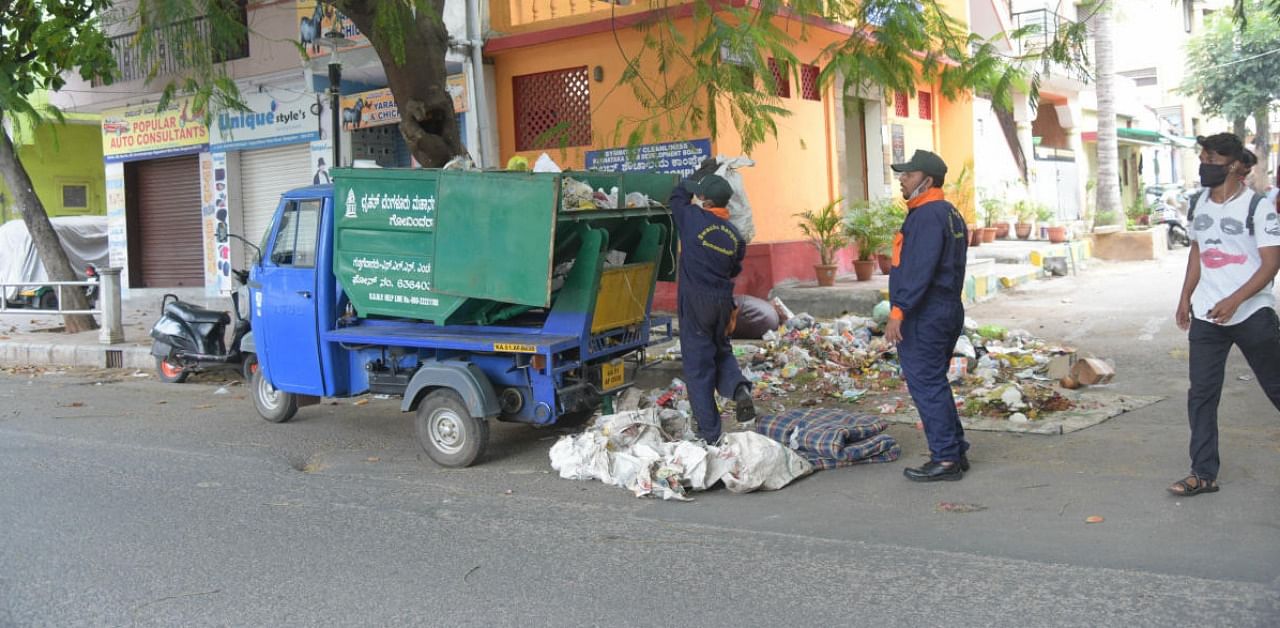
Waste is wealth. However, waste if not managed properly, can lead to severe adverse impacts on environment and human health. Sewage and solid waste generation have become key environmental issues in cities and even villages. Generation of huge waste is attributed to the urbanisation, industrialization, population explosion and need utmost attention.
In India, sewage alone contributes 70% of water pollution. Karnataka, as a state, contributes 6% to India’s total sewage generation. This is a matter of environmental concern. Karnataka, with 67 million people, produce about 3,357 million liters per day (MLD) of sewage, which is expected to increase steeply. The increase in sewage generation is a wake-up call to protect our water resources and environment.
Bengaluru, with a population of about 8.5 million, generates 1,440 MLD of sewage from domestic and industrial establishments. However, to mitigate the sewage issue, the Bengaluru Water Supply and Sewerage Board (BWSSB) treats about 1,037 MLD of sewage through their sewage treatment plants. And in other parts of the state, local bodies through Directorate of Municipal Administration (DMA) treat 1,559 MLD and Karnataka Urban Infrastructure Development and Finance Corporation (KUIDFC) treat 357.5 MLD of sewage.
Today, Karnataka has 145 Sewage Treatment Plants (STP) of which 29 belongs to the BWSSB, 94 STPs and two Fecal Sludge and Septage Management (FSSM) belong to DMA and 20 STPs to KUIDFC. Of the total sewage generation (3357 MLD), the combined treatment capacity of these STPs managed by BWSSB, DMA and KUIDFC is 76.3% (2,561 MLD). Of this installed capacity, 66.5% is being utilised to treat 1,704 MLD sewage.
In Bengaluru, compared to the sewage generation (1,440 MLD), STPs’ treatment capacity is of 80.34% (1,157 MLD) and operate at 76.92% its capacity treating 890 MLD sewage. Of this treated sewage, about 56.18% (around 500 MLD) of treated water is used for refilling tanks in Kolar and Chikkaballapur and watering the premises of the international airport, golf course, Lalbagh and Cubbon Park, thus saving precious fresh water. In rest of the Karnataka, the sewage generated by ULBs is 1,916 MLD. The STPs operated by DMA has operational capacity to treat 1,075 MLD while KUIDFC has operational capacity to treat 330 MLD.
Overall, there is a gap of 33.45% in the utilisation capacity of the total existing STPs in the state. This gap could be bridged through Interception, Diversion (I&D) of the sewage to a wet well and pumping it to the nearby STPs to maximize the utilization of installed capacity. Measures are taken to implement several such I & D projects by BWSSB and Karnataka Urban Water Supply & Drainage Board (KUWS&DB). Even then there is 23.7% gap in the current treatment capacity that needs to be addressed.
Considering the population explosion and increased sewage generation, the existing STP capacity would severely fall short. Hence, there is a pressing need to increase the sewage treatment capacity of the state in order to avoid adverse effect of sewage on health and environment. To cover the shortfall in treatment of domestic sewage, BWSSB and KUIDFC have proposed 24 and 4 STPs respectively, while DMA has proposed 75 STPs and 48 FSSMs. The proposed projects are in various stages such as preparation and submission of Detailed Project Report (DPR), tendering and under construction.
Prevent deterioration
In order to prevent further deterioration of water bodies, there has to be rapid action in the construction of the proposed STPs with modern and feasible technologies. Recycling and reuse of treated water needs be extensively promoted. In addition to installation of new STPs, functioning efficiency of existing STPs must be monitored and improved by adopting newer technologies and conforming to Standard Operating Procedure (SOP) set by Central Pollution Control Board (CPCB) and Karnataka State Pollution Control Board (KSPCB). A collective effort must be planned to minimise freshwater usage and maximize sewage treatment.
Municipal Solid Waste (MSW) management: Along with sewage, solid waste generation and management is also of great environmental concern. Today, door-to-door collection of waste is a general norm in urban centres. The collected waste is sorted (dry and wet) and processed in waste processing facilities. Any mismanagement and unscientific handling of solid waste cause severe health problems on humans and the surrounding environment. A lot needs to be done in the technological and infrastructure front to manage solid waste scientifically. In Karnataka, MSW is handled by DMA and BBMP. A total of 10,916 tonnes per day (TPD) is generated in the state. Of this, BBMP handles 4,500 TPD (41%) while DMA manages 6,416.1 TPD (59%). Nearly 90% of MSW is collected by the ULB authorities through door-to-door collection. The collection of dry waste has been assigned to local dry waste collection centres, NGOs, etc, as per Solid Waste Management Rules-2016.
To handle wet waste, BBMP has eight MSW processing plants with an installed capacity of 2,070 TPD. However, only 1,448 TPD of wet waste is currently processed. Only 46.8% of the collected MSW is processed in various processing facilities, whereas 53.2% of MSW is left unprocessed.
In order to bridge this gap, KSPCB is pushing BBMP to fully utilise the installed capacity of MSW plants and BBMP has envisioned major projects under ‘Waste-to-Energy’ initiative to make dry waste treatment economically feasible. Additionally, the cement industries across Karnataka are instructed to utilise the dry solid waste as Refuse Derived Fuel (RDF) for co-generation purpose. The RDF is nothing but sorted compressed and bailed dry waste that has a calourific value higher than 2,000 Kcal/Kg.
The gap in generation and processing of MSW has to be minimised by collective efforts to reduce, reuse and recycle and adopt environmentally sound technologies like composting, waste to energy initiatives etc. Streamlining of collection, sorting, transport and treatment needs to be effectively monitored and carried out to establish a “clean and green Karnataka”.
(The writer, officer of Indian Forest Service, is Member Secretary, KSPCB)